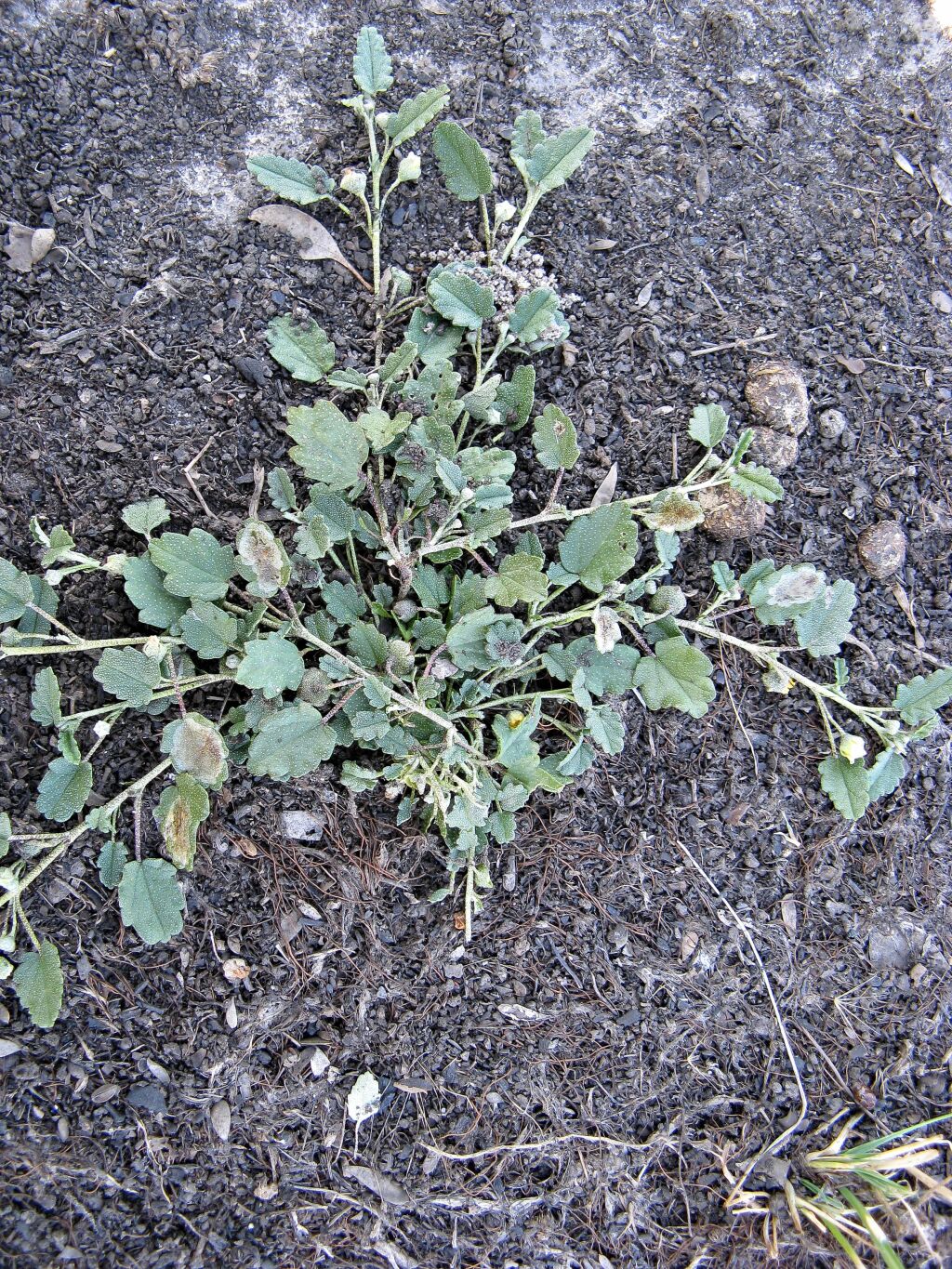Sida corrugata
Lindl. Variable SidaProstrate or decumbent herb or subshrub. Leaves narrowly ovate to circular, to 3 cm long and wide, rounded to subcordate at base; margins deeply crenate; surfaces stellate-pubescent (sometimes almost scaly), dark green to grey-green above, paler with denser pubescence below; stipules 2–6 mm long. Flowers usually solitary, rarely to 4 per axil; pedicels not exceeding leaves, to 15 mm long, more densely pubescent above articulation; calyx unribbed, divided to c. midway; lobes 1.5–2.5 mm long; petals 3–7 mm long, rounded or emarginate apically; styles 6–10. Fruit transversely elliptic, c. 4–6 mm diam., deeply corrugated, densely pubescent, flat or abruptly tapered into a raised rounded central portion; mericarps 2.8–3.5 mm high, reticulate on lateral wall, deeply grooved apically, unawned. Flowers most of year.
LoM, MuM, Wim, VVP, VRiv, MSB, RobP, MuF, Gold, CVU, GGr, NIS, EGU. Occasional in grassland and grassy woodland communities on fertile loams in northern and north-western Victoria, with disjunct occurrences at Long Forest near Melton, and near Suggan Buggan in the east.
Extremely variable in habit. The most reliable character for recognizing Sida corrugata is the fruit which is extremely corrugated and has 6–10 mericarps. There are 2 leaf forms. The narrow-leaf form (= var. angustifolium) tends to be more depauperate than the wider-leaf form (= var. corrugata) and to occur on heavier soils but the two forms are occasionally sympatric and it is possible to find both leaf forms on a single plant. The name Sida humillima relates to a very depauperate form in which the hair-type is almost scale-like.
A distinctive, suberect, grey-leaved form with up to 4 flowers per axil and stipules larger than normal has been collected recently near Boort where it was growing with the commoner, decumbent, green-leaved, single-flowered form. Further investigation may show the grey-leaved form worthy of formal recognition.
Barker, R.M. (1996). Sida. In: Walsh, N.G.; Entwisle, T.J., Flora of Victoria Vol. 3, Dicotyledons Winteraceae to Myrtaceae, pp. 340–345. Inkata Press, Melbourne.
 Spinning
Spinning

